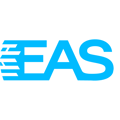This guide helps you set up tools to monitor your Shopify store performance.
Recommended tools:
- Google Analytics
- Google Search Console
- Google Ads
- Semrush, or similar
- Shopify Store
Setting up and connecting accounts
GA4 (Google Analytics 4) is the recommended analytics tool by Google for its services.
Here's why:
- Future-proofed: Universal Analytics (UA) is sunsetting in July 2023, so GA4 is the future of website and app analytics within Google services.
- Privacy-focused: GA4 is designed to work effectively even with stricter data privacy regulations.
- Unified platform: GA4 offers a unified analytics platform for both websites and apps, making data analysis more streamlined.
- Advanced features: GA4 boasts advanced features like machine learning and attribution modeling for deeper insights.
A. Creating a Google Analytics 4 Property:
- Go to https://marketingplatform.google.com/about/.
- Sign in to your Google Account.
- Click on "Analytics."
- Click on "Get started."
- Choose "Create a property."
- Enter a name for your property and choose "Web" as the measurement setting.
- Fill out the website URL and reporting time zone.
- Click on "Create."
- Follow any further instructions to complete the GA4 property setup.
B. Connecting Google Search Console to Google Analytics:
- Log in to your Google Analytics account.
- Navigate to the Admin section. This is usually found at the bottom left corner of the page, represented by a gear icon.
- Click on "Property settings" under the relevant property you want to link.
- Search for "Product links" and click on it.
- Scroll down and click on "Search Console links".
- You'll see the option to link to a Google Search Console property. Choose the relevant Search Console property associated with your website.
- Click "Next" and follow any further prompts to finalise the linking process.
C. Connecting Google Ads to Google Analytics 4 (for GA4 properties):
- Log in to your Google Analytics account.
- Navigate to the Admin section as mentioned previously.
- Click on "Property settings" under the relevant GA4 property.
- In the "Property Settings" section, find "Google Search Console". Click on it to initiate the linking process.
- Follow the on-screen prompts to choose the relevant Search Console property and complete the linking process.
D. Connect GA4 property to Shopify:
- In your Shopify admin, navigate to Online Store > Preferences.
- In the Google Analytics section, click Manage pixel here.
- Click Connect your Google account. (You might need to grant permissions)
- In the Your Google Analytics property section, select the tag for the GA4 property you created in Step A.
- Click Connect.
E. Try tools like Semursh
Semrush offers a vast toolkit for digital marketing tasks, so getting started can depend on your specific goals. However, here's a general roadmap to kickstart your journey:
1. Create a Semrush Account (or Use the Free Trial):
Head over to https://www.semrush.com/ and sign up for a free trial or choose a paid plan that suits your needs.
2. Familiarise Yourself with the Interface:
Semrush has a comprehensive dashboard, but it can seem overwhelming at first. Spend some time exploring the different sections and tools.
3. Start with Essential Tasks:
Here are some fundamental functionalities to get you going:
- Audit your website: Use the Site Audit tool to identify technical SEO issues like broken links, slow loading times, and mobile-friendliness problems. Fixing these issues can significantly improve your website's search ranking.
- Conduct keyword research: The Keyword Magic Tool is a goldmine for discovering relevant keywords with search volume and competition data. This helps you target keywords that drive traffic and conversions.
- Track your rankings: Use the Position Tracking tool to monitor your website's ranking for specific keywords over time. This allows you to measure the effectiveness of your SEO efforts.
4. Explore Additional Features:
As you become comfortable with the basics, delve into other functionalities like:
- Competitive analysis: Uncover your competitors' SEO strategies, top keywords, and backlinks using tools like Organic Research and Backlink Gap. This empowers you to learn from their successes and avoid their mistakes.
- Content creation: Leverage the On-Page SEO Checker tool to optimize your content for target keywords and improve your search ranking potential.
- Backlink building: Backlinks are crucial for SEO success. Use the Backlink Analytics tool to analyze your backlinks and identify link-building opportunities.
5. Utilise Semrush Resources:
Semrush offers a wealth of free resources to enhance your learning:
- Semrush Academy: This platform provides free courses and tutorials on various digital marketing topics, including using Semrush tools effectively.
- Semrush Blog: Stay updated on the latest SEO trends and best practices through informative blog posts.
Remember:
- Start with the core functionalities like keyword research, site audits, and rank tracking.
- Explore additional features as you become more comfortable with the platform.
- Leverage Semrush's free resources to learn and improve your digital marketing skills.
By following these steps and continuously learning, you can effectively utilise Semrush to optimise your website's online presence and achieve your digital marketing goals.
To learn more about EAS recommended steps, read EAS's How to boost European Sales Guide
